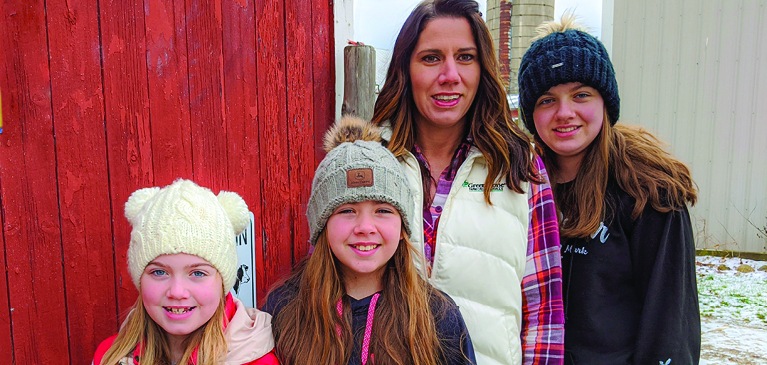
As a solo farmer, full-time GreenStone Farm Credit Services employee, and mom to three young daughters, Amanda Leik knows a thing or two about organization. Running a farm by herself was not in her original plan, but when her husband unexpectedly passed away five years ago, Amanda chose to continue the work they had begun together.
Sharing her learning curve, Amanda highlights what makes life easier while farming as an individual and as a woman...
Don’t try to do it all.
“I think the first thing I learned is that you can’t do it all yourself,” Amanda says. “If you’re going into farming as an individual you will need to either enlist your family or develop relationships with people you can hire or go to for expert advice.
“I have a hard time accepting help just because I like to do everything on my own. But I think it comes to a time where you just have to hire things done. I hire out my harvesting; owning machinery and performing maintenance is just too expensive for a small farmer.”
Start small.
Starting small is the best way to start farming, Amanda feels. It allows for flexibility. Renting acreage, or starting by providing farm-to-table fruits and vegetables to restaurants or markets are paths to getting your feet wet before a beginning farmer invests a lot of money.
And keep your day job.
Amanda farms 250 acres of corn, wheat, soybeans and alfalfa and keeps 35 cows. Like many farmers, she also has a ‘regular’ job to supplement irregular farm earnings. Employed as an associate crop insurance specialist, Amanda appreciates GreenStone’s work culture, allowing her flexibility when needed to accommodate her children’s’ school hours and attend extracurricular activities.
“Farming is my passion and what I love to do,” she comments. “But when it’s your sole income, it’s a lot harder, especially starting out without having some extra income coming in.”
Protect your investment.
Working in crop insurance, Amanda understands the benefits of insurance for farmers, and encourages farmers to connect with a local branch expert. GreenStone also offers young, beginning and small farmer loans and Grow Forward Grants along with tax-planning services and other resources that help farmers succeed.
Stay organized.
Juggling farm, work and family requires organization and the ability to multitask.
“I don’t do well sitting still. I always want to be busy and I think most farmers are like that. I complain ‘my life’s so chaotic’ but I think I thrive off that chaos, having so many things going, and I do better under those conditions.”
Amanda relies on her phone calendar to keep her on task and on time for appointments. She sets audible reminder notifications to keep her on track.
Ask for help.
Asking for help and importantly, accepting help when it is offered is a game-changer.
“I would tell a beginning farmer to not be afraid to ask experienced farmers for help or advice. Use other people as your resource! Ask neighbors who are farming, go visit other people’s operations, see what they’re doing. I haven’t met any farmer that isn’t willing to do anything for you if you ask a question.”
Show confidence.
As a solo woman farmer, Amanda occasionally encounters a double standard. She advises women who farm to act confident and go get what they need – even if they don’t feel confident at first. It’s okay not to know it all, but she finds people treat you with respect when you display a self-assured attitude toward learning.
Amanda encourages women to seek out organizations or social media groups that support women in farming. Based in Michigan, the Farm Women’s Symposium offers professional development, friendship and support to women in agriculture. The University of Wisconsin’s “Heart of the Farm – Women in Agriculture” website advances the evolving role of ‘farm wives’ to women as independent farmers.
“I would like my own daughters to go into farming,” she admits. “But maybe on a part time aspect and not as their sole income. It’s a hard life. It’s a good life, but it’s hard. I would like them to have the best of both worlds!”
Know it’s a lifestyle.
“I wouldn’t be able to do any of this without my family,” Amanda emphasizes. “That’s the number one thing. So go into farming understanding that you’re either going to have to have help built-in or you are going to have to hire it – and I do both. As the kids get older they help out, and for them I don’t think it ever feels like work. When we go do chores, it’s about us being together as a family and doing things together. It’s really the best part of life on a farm.”
To view the article in the online 2020 Winter Partners Magazine, click here.


